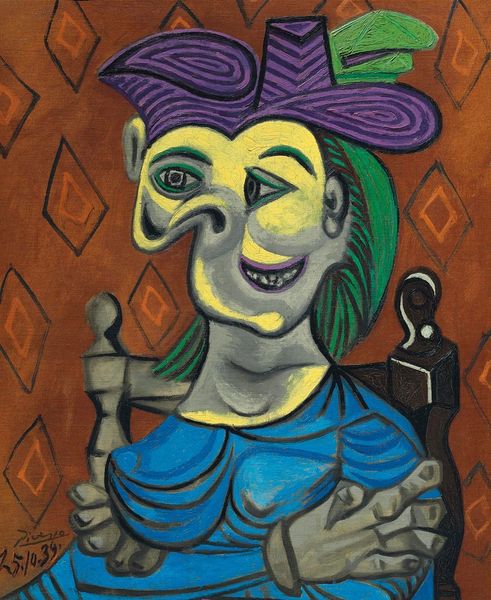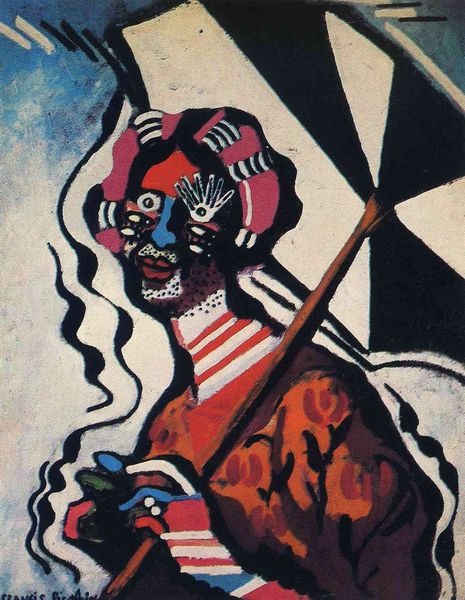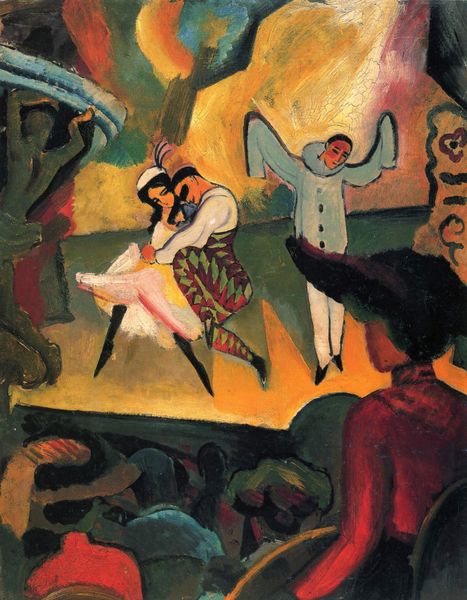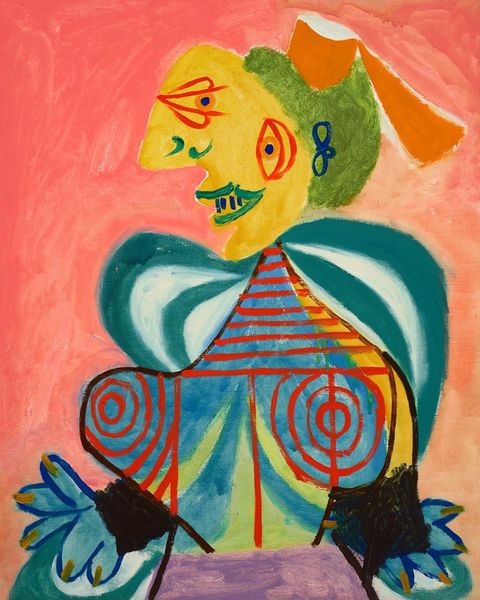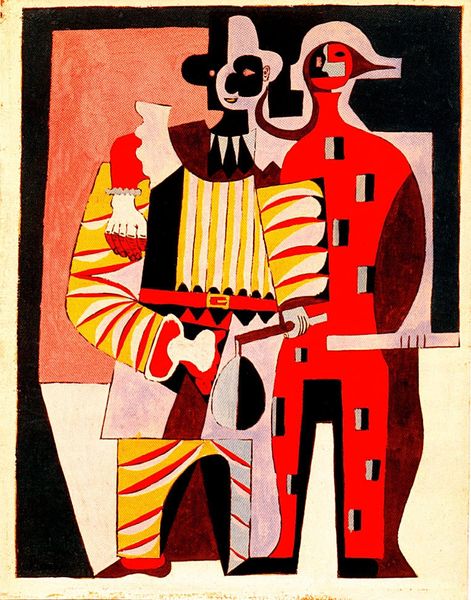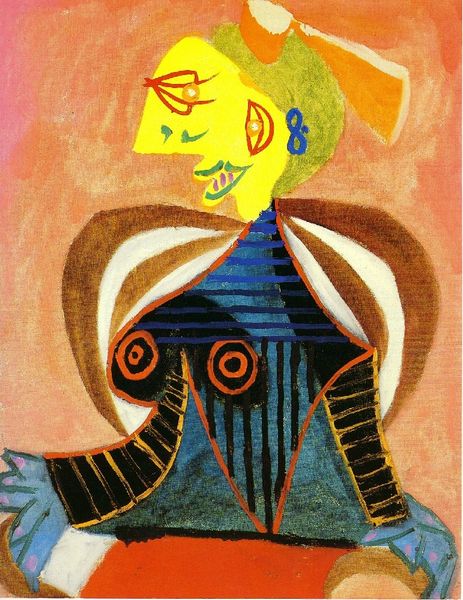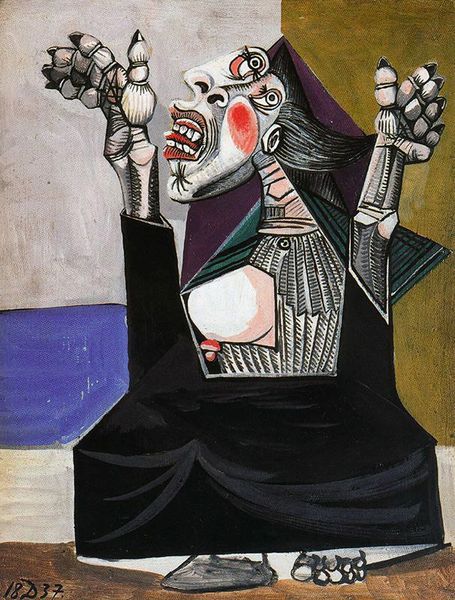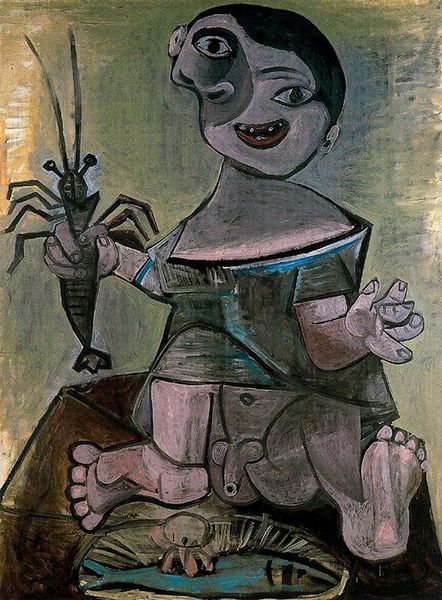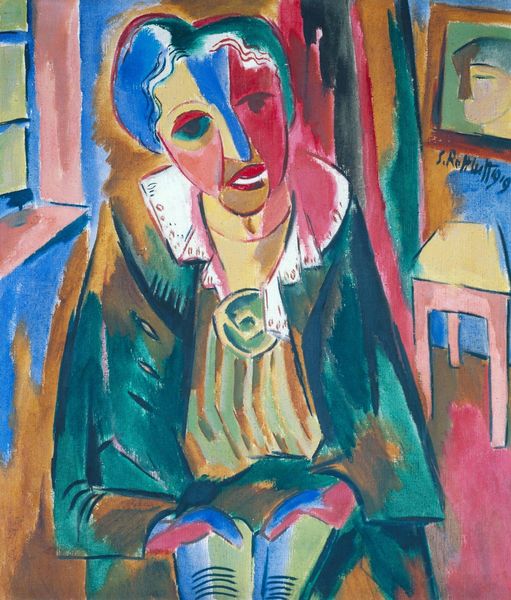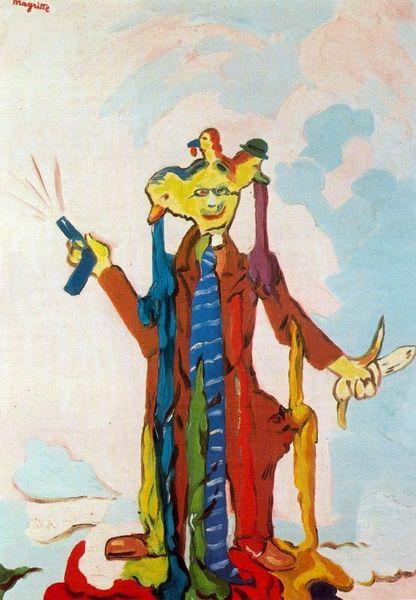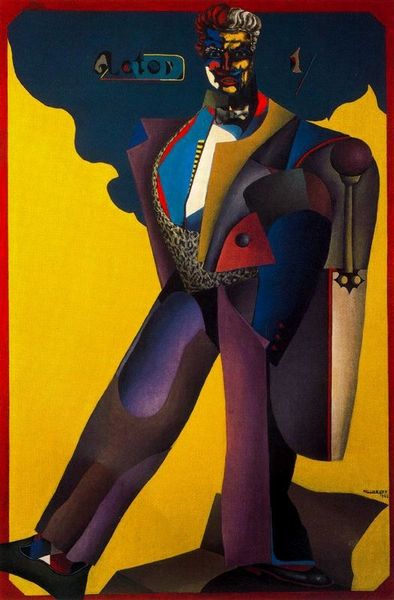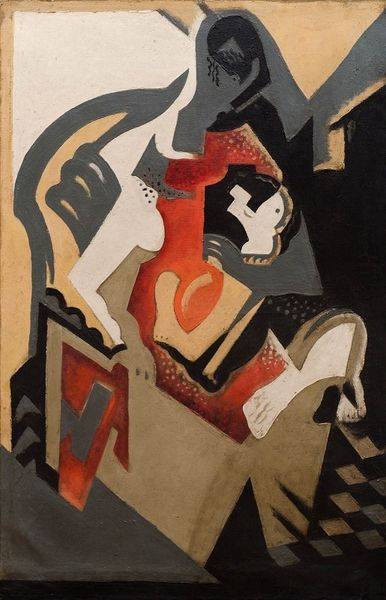
Copyright: Pablo Picasso,Fair Use
Curator: Here we have Pablo Picasso's 1937 "Portrait of Paul Éluard," rendered in oil paint. It’s striking, isn't it? Editor: Absolutely. The green skin tone is unexpected. I also notice the emphasis on the flatness of the picture plane. How do you understand Picasso's use of material in service to form in this piece? Curator: Notice the raw quality of the pigment and brushstrokes. This wasn't about illusion, but a radical engagement with materiality. Oil paint itself becomes a means to break from academic convention, decentering the established hierarchies of art making. It foregrounds the material processes of its own creation. Do you see this engagement in other aspects? Editor: Well, the fragmented composition challenges traditional portraiture. But how does it reflect social contexts? Curator: Éluard was a Surrealist poet, deeply engaged in leftist politics. Picasso shared similar ideologies, and they found ways to integrate that perspective into their works. How the tools used, techniques applied, the choices of what not to erase or smooth down…these became ways to make political statements in material form. It's about disrupting established orders, whether in art or society. What effect do you think this approach had on the viewing public? Editor: It must have been jarring to those accustomed to traditional, realistic painting. Curator: Exactly. And that shock was intentional. It's not just about seeing a portrait, but questioning the very systems that dictate what art *should* be, how it should be made, and for whom. Thinking about how artistic labor and material production meet socio-political realities adds such a meaningful layer. Editor: I agree, focusing on materials and production provides a fresh lens. Thank you!
Comments
No comments
Be the first to comment and join the conversation on the ultimate creative platform.
